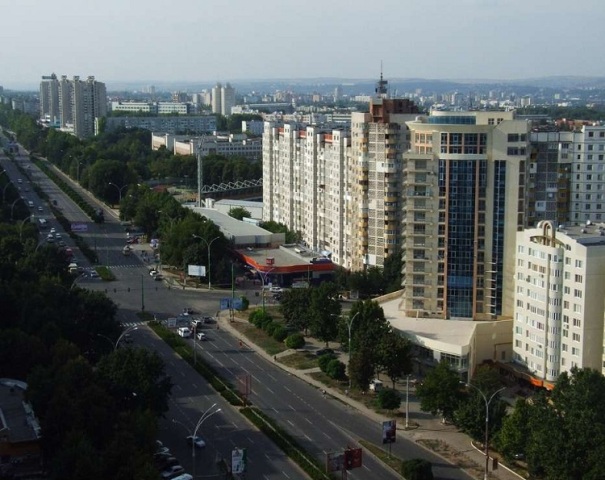Moldova is a landlocked country that is situated in the eastern part of Europe. With this article, explore some fun and interesting facts about Moldova.
Facts About Moldova
Moldova is a European country that stands landlocked in the continent’s eastern part. It stands surrounded by Romania in the west and Ukraine in the north, east and south. Moldova remained under Soviet occupation, before declaring independence in August 1991. Even after gaining freedom, the country continues to serve host to Russian military forces, which have been stationed in the breakaway territory of Transnistria since 1993, much to the chagrin of its government. Moldova derived its name from the ‘Moldova River’ and various legends exist which narrates its founding and history. Already a member of several international organizations, it aims to join the European Union soon. Also, if you wish to see the largest cave of the world, it is situated in Criva, Moldova which has the longest path underground and is a must visit cave. Scroll further if you want to know more about Moldova, explore the fun and interesting provided below.

Image: Kamen Tabakov@flickr
Fast Facts
Continent: Europe
Area: 33,846 km2
Capital: Chi?inau
Population: 3,559,500
Currency: Moldovan leu
Official Languages: Moldovan
Calling Code: +373
Independence Day: 27 August 1991
Type Of Government: Parliamentary Republic
Fun & Interesting Facts about Moldova
- The official name of Moldova is ‘Republic of Moldova’.
- The official language of Moldova is Moldovan. However, Ukrainian, Russian and Gagauz are also widely spoken there.
- Majority of the people in Moldova are Orthodox Christians, followed by Independent Christians, Muslims, Atheists, Protestants and Nonreligious.
- The main ethnic groups in Moldova include Moldovan (Romanian), Ukrainian, Russian, Gagauz and Bulgarian.
- Moldova follows the system of ‘Parliamentary Republic’.
- In the Middle Ages, majority of area under Moldova today formed a part of the Principality of Moldavia.
- Moldova became a part of the Russian Empire, under the name of Bessarabia, in the year 1812.
- Bessarabia joined Romania in 1917-1918, after the Russian Empire was dissolved.
- In 1940, the Soviet Union occupied Bessarabia. Later, it was split between the Ukrainian SSR and the newly-created Moldavian SSR.
- Moldova gained independence from the USSR on 27th August 1991.
- Moldova ranks 132nd in the world in terms of population and 138th in the world in terms of area.
- Moldova is a member state of the United Nations, WTO, OSCE, GUAM, CIS, BSEC and other international organizations.
- Chisinau, Tiraspol, Balþi and Tighina are the major cities of Moldova.
- Dealul Balanesti (430 m) forms the highest point in Moldova.
- Dniester (2m) is the lowest point in Moldova. Beleu and Manta are the largest natural lakes in Moldova.
- The cave in Criva, Moldova, is amongst the largest caves of the world. The underground path out there is also one of the longest in the world.
- Moldavia (Bogdania) was founded by Prince Bogdan, around mid-14th century.
- Gagauz became an autonomous region of Moldova in 1994.
- In 2001, Moldova became the first former Soviet state to elect a Communist as its president.
- Moldova is one of the poorest countries in Europe.
- The largest means of providing transportation to all the other parts of the country is Chisinau, the capital of the country.
- Before the Second World War, most part of Moldova was under Romania and about two - thirds of the entire population speaks fluent Romanian.
- The state of Moldova is a member of several international organizations such as Council of Europe, WTO, United Nations, BSEC, GUAM, CIS and many others.
- Wine is exported in large quantities in the state of Moldova and rates to be the largest exporter of the world. Almost half of the population is involved in the process of making wine and viticulture.
- Moldova gained independence on 27th August 1991 and is currently a new member of Europe after being controlled under the Soviet Union since the year 1940.
See also
More from iloveindia.com
- Home Remedies | Ayurveda | Vastu | Yoga | Feng Shui | Tattoos | Fitness | Garden | Nutrition | Parenting | Bikes | Cars | Baby Care | Indian Weddings | Festivals | Party ideas | Horoscope 2015 | Pets | Finance | Figures of Speech | Hotels in India : Delhi | Hyderabad | Chennai | Mumbai | Kolkata | Bangalore | Ahmedabad | Jaipur
- Contact Us Careers Disclaimer Privacy Policy Advertise With Us Lifestyle Sitemap Copyright iloveindia.com. All Rights Reserved.







